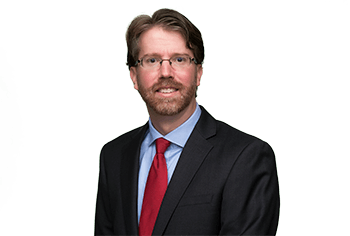Belgium – New Law Governing Use Of Human Body Material And Medically Assisted Reproduction
- 09/03/2022
- Articles
Introduction
On 8 March 2022, the Belgian Official Journal published the Law of 23 February 2022 on human body material and embryos and gametes (Wet houdende bepalingen betreffende menselijk lichaamsmateriaal en embryo’s en gameten / Loi portant des dispositions en ce qui concerne le matériel corporel humain et les embryons et gamètes – the Law; see, attachment).
The Law changes the rules governing the use of human body material and medically assisted reproduction
Amendments to Law of 19 December 2008 regarding the procurement and use of human body material destined for human medical applications or scientific research (the Law of 2008)
The Law amends the Law of 2008 to facilitate scientific research involving human body material. Given the broad scope of the Law of 2008 (which defines “human body material” as “any biological body material, including human tissues and cells, gametes, embryos, foetuses, as well as substances derived thereof, regardless of their degree of processing, with the exception of substances of non-human origin”), stakeholders voiced two concerns regarding the existing rules.
First, it was considered excessively difficult to obtain access to commercial stem cell lines due to the requirement that a biobank act as a supplier of such products.
Second, biobanks were thought to face an unnecessary administrative burden because of their obligation to register every derivative product or extract of the human body materials upon such materials’ return to the biobanks following the research.
The Law meets in part these concerns for two newly defined types of human body material, namely:
- “Artificialised” material (geartificialiseerd materiaal / matériel artificialisé), which is defined as “human body material produced or cultured outside of the human body”; and
- Extracted material (geëxtraheerd materiaal / matériel extrait), which is defined as “material extracted from human body material, but which no longer contains any cells”.
The Law exempts these materials from specific requirements of the Law of 2008:
- For scientific research without application on humans, it will no longer be necessary to (i) show that the use of the human body material is linked to “a diagnostic, preventive or therapeutic objective that has a specific scientific foundation or that has a relevant objective in scientific research”, and (ii) obtain a prior favourable opinion by an ethics committee, provided four conditions are satisfied: (i) the research project makes use of artificialised or extracted material; (ii) the research project and its objectives have been submitted to the ethics committee; (iii) the ethics committee did not object to the research project within a 28-days’ time period; and (iv) the human body material will not be used for genetic research. Conversely, for scientific research applied on humans, researchers will still have to comply with these requirements and thus obtain a prior favourable opinion of the ethics committee.
- The sourcing of already artificialised and extracted material can occur from other parties than a biobank on the condition that the human body material will be used for scientific research without application on humans. As a result, the secondary material will no longer be considered fit for use for medical applications or any other application on humans. Logically, this regime is off limits for primary materials and material used for genetic research.
- Donors of human body material (i.e., primary material) will have to provide their informed consent for scientific research and must be informed of the purpose and any subsequent processing that results in artificialised or extracted material. They should also be advised of the specific cases in which the traceability of the donated material can be lifted (see, next point). For the subsequent use of artificialised or extracted material, the consent of the donor of primary material is not required.
- If the material will be processed into artificialised or extracted materials for use in scientific research (but not for medical application on humans or genetic research), the traceability of the human body material does not have to be maintained vis-à-vis the donor but should be maintained as regards the supplier of the material.
- Operations involving artificialised and extracted material intended for scientific research (but not for medical application on humans or genetic research) can now be carried out outside a biobank.
These changes should encourage specific types of scientific research and international scientific cooperation while not compromising the existing safeguards with regard to medical applications on humans and genetic research.
Amendments to Law of 6 July 2007 on medically assisted reproduction and the destination of surplus embryos and gametes (the Law of 2007)
The Law aims to ensure that when both prospective parents are of the female gender, the couple will be allowed to have gametes (i.e., reproductive cells) harvested from both partners for the purpose of creating embryos of both partners. Before the law, a couple of prospective parents could only harvest gametes and produce embryos once, unless the (i) embryos made from an earlier harvesting did not meet the required health standards or (ii) a medical reason justified a new harvesting of gametes.



